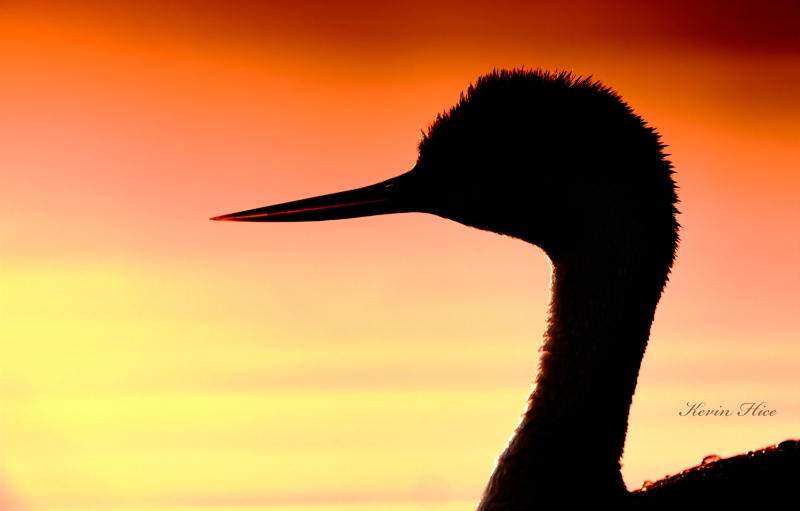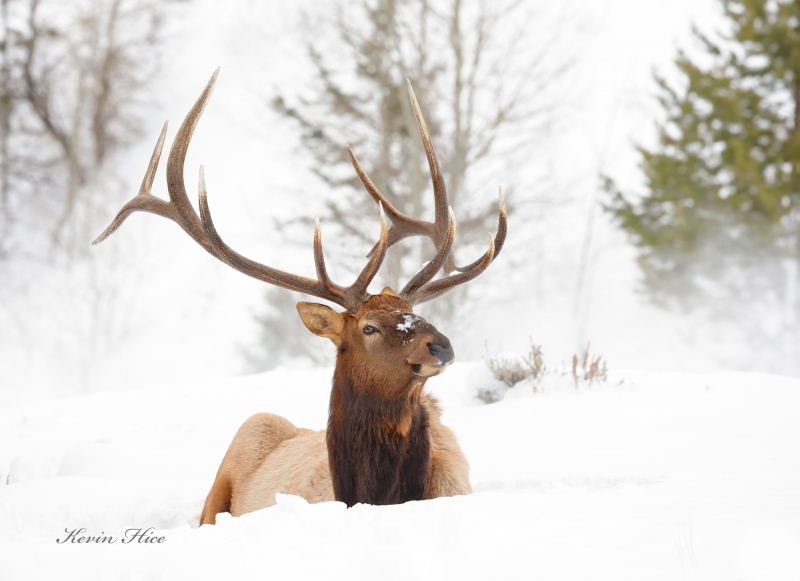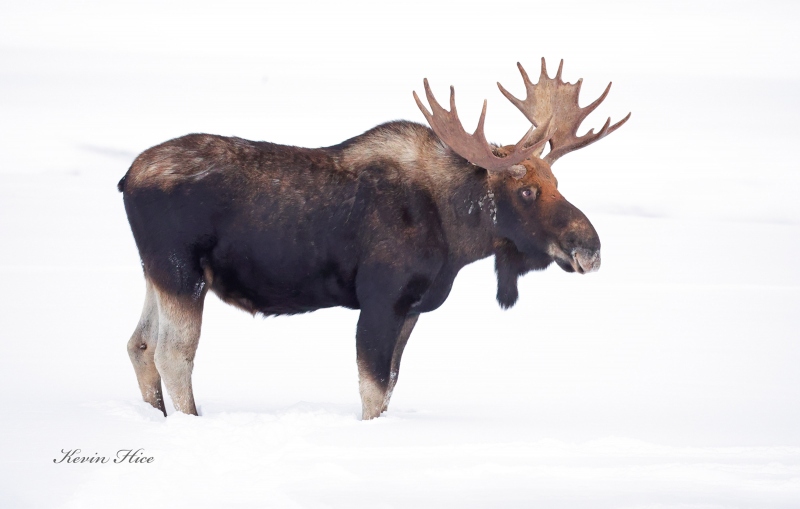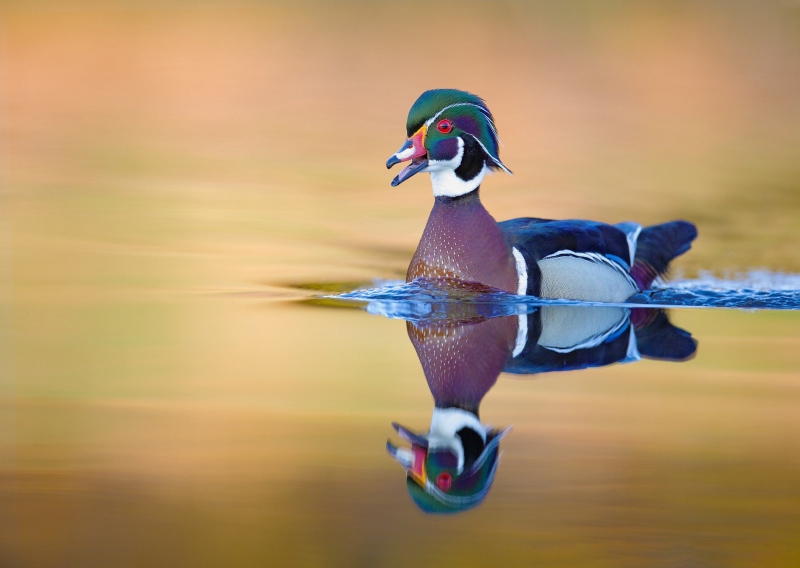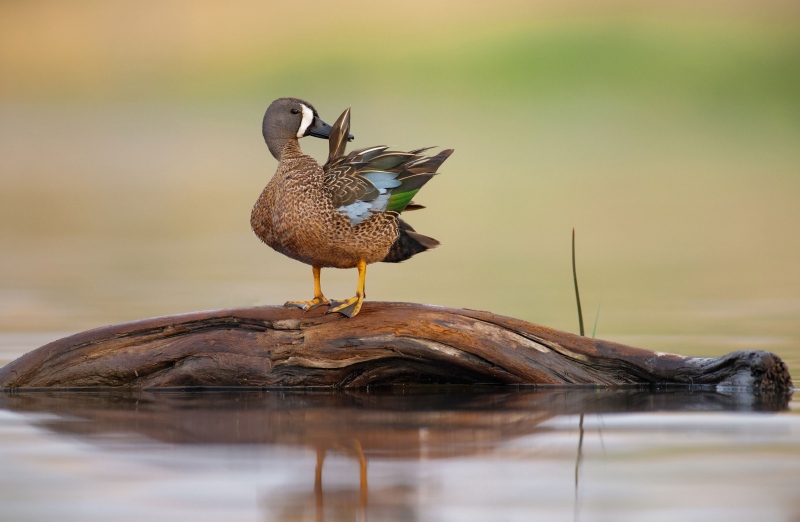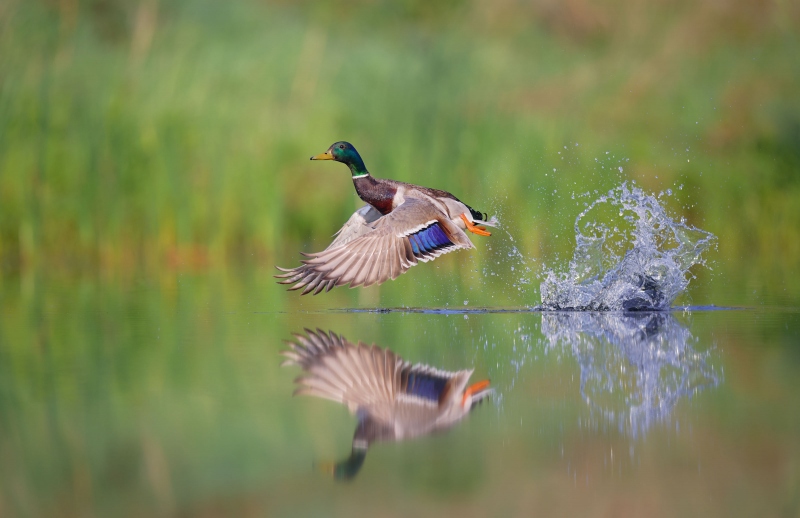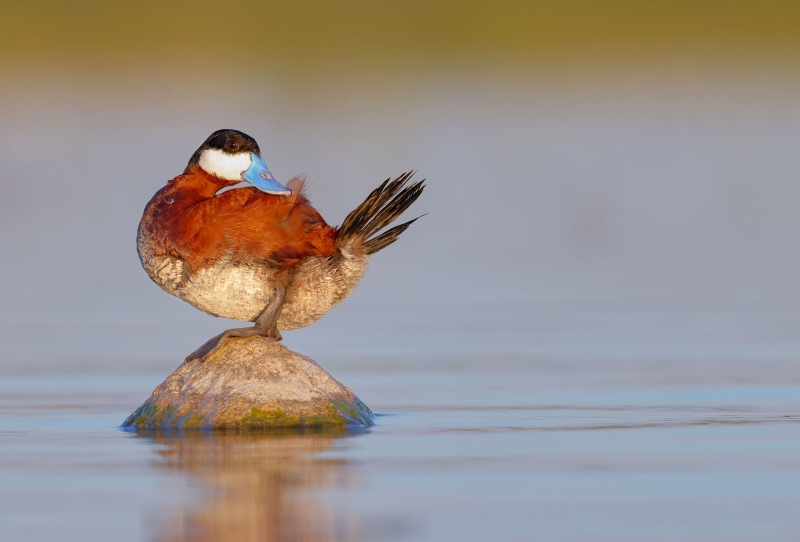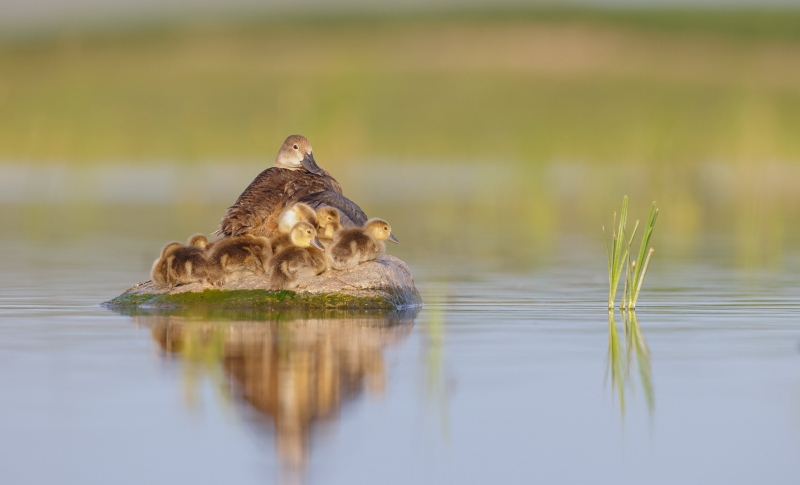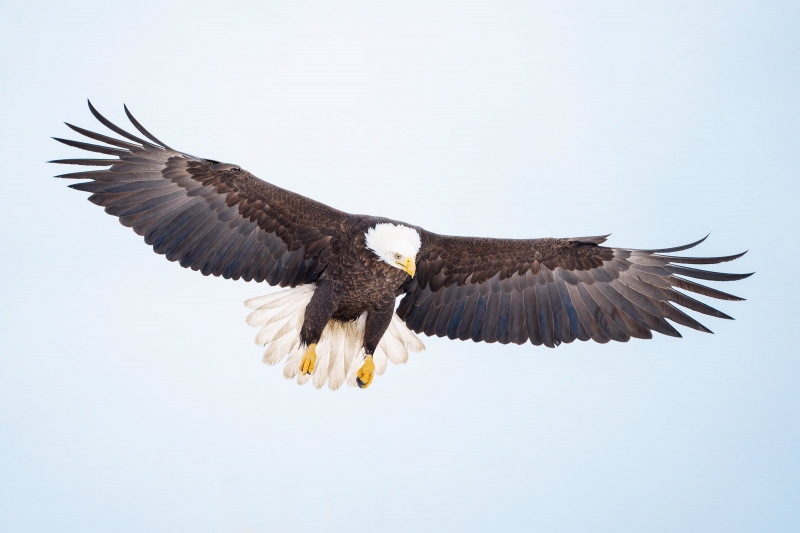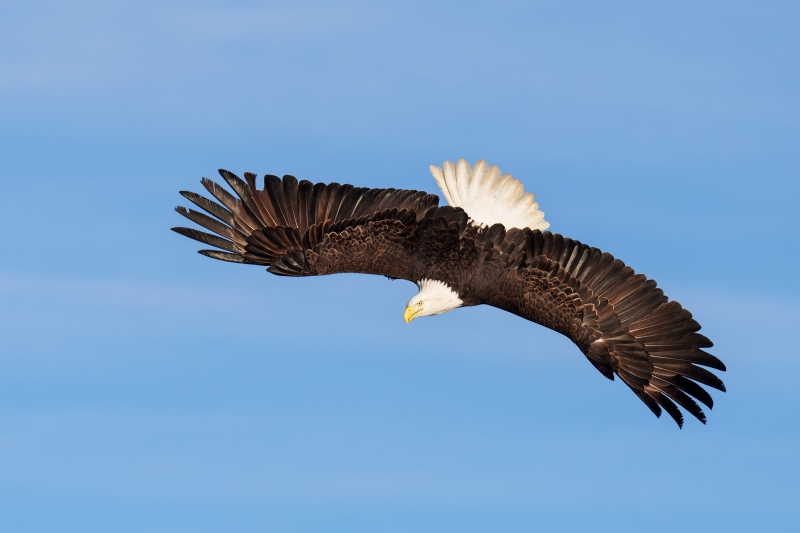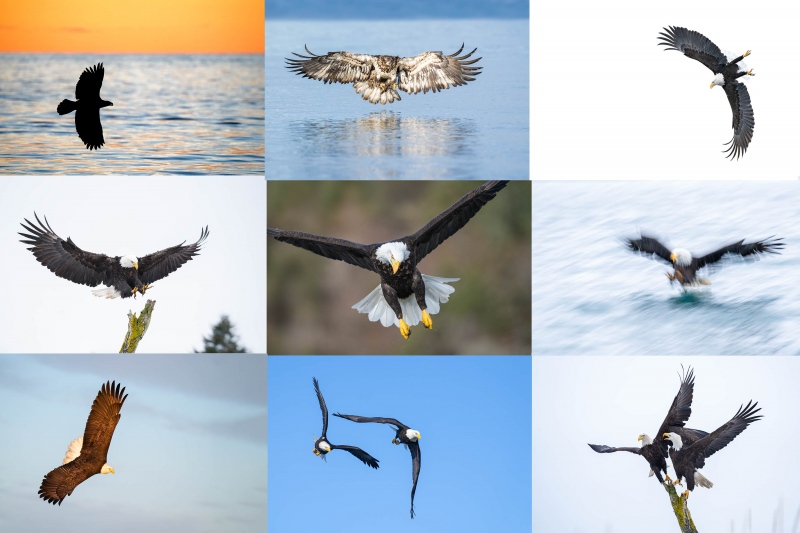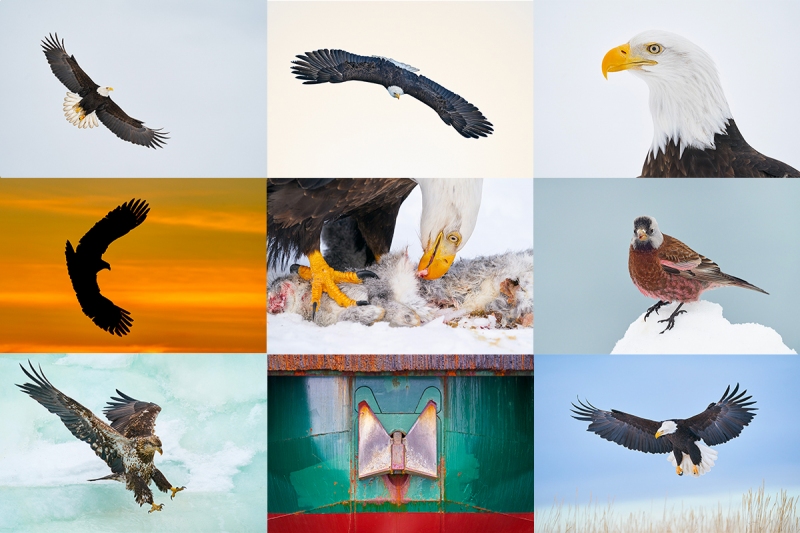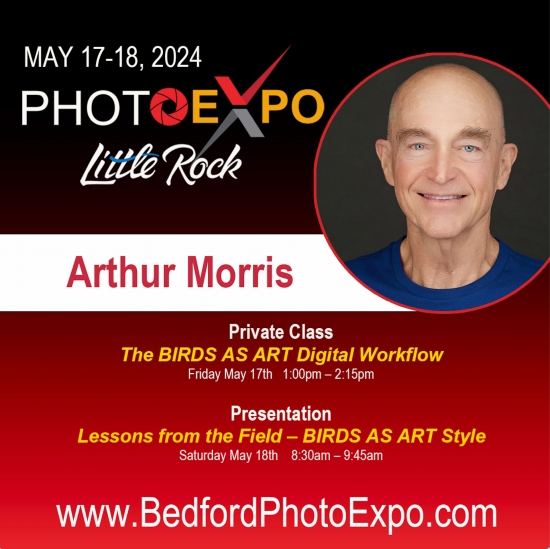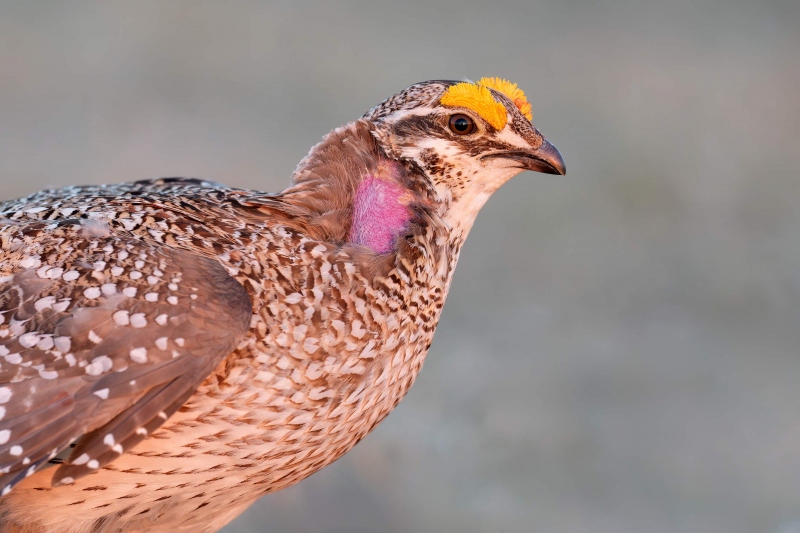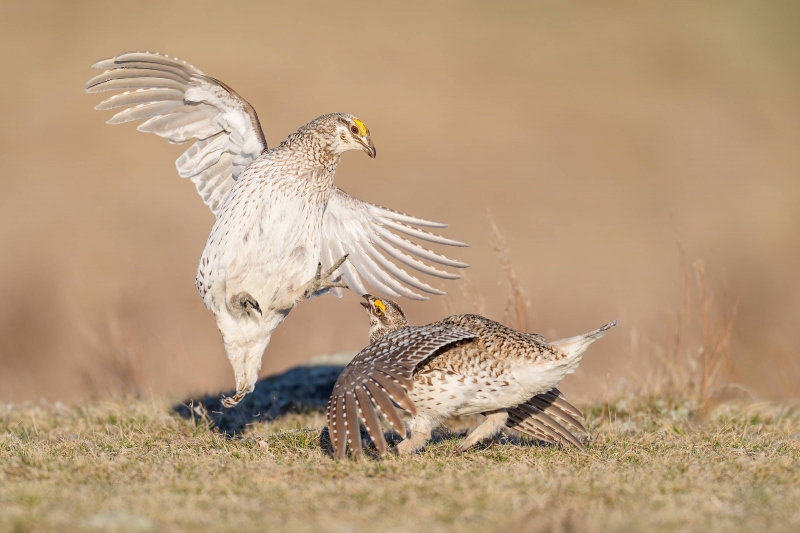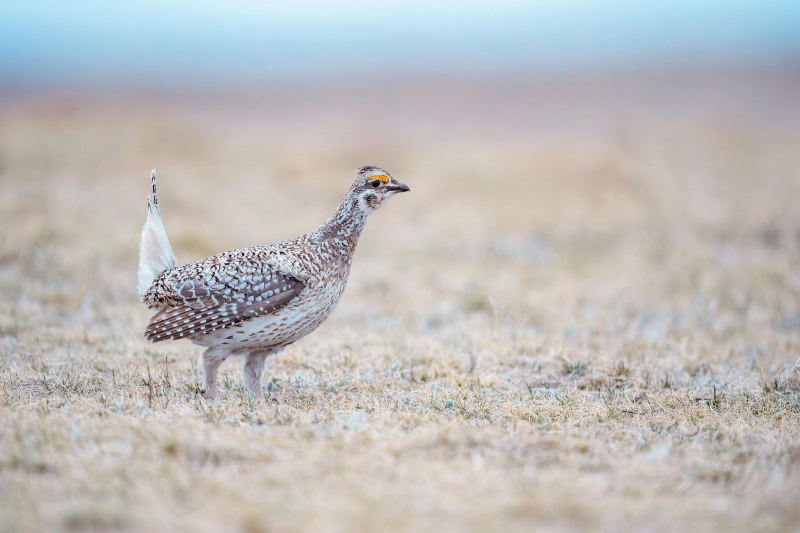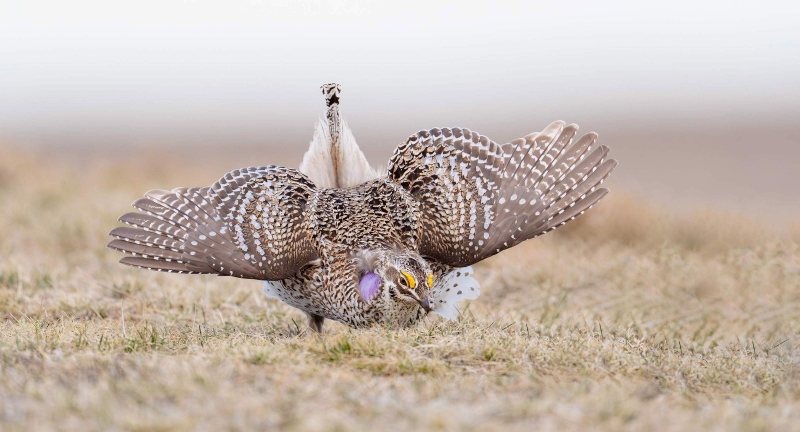April 26th, 2024 Your Call?
Which two of Kevin’s images are the strongest? Yes, I know that this is a very difficult question. Please leave a comment and let us know why you made your choices. I will share my two favorites with you here tomorrow.
Supporting My Efforts Here
If you enjoy and learn from the blog, please consider using one of my affiliate links when purchasing new gear. It will never cost you a single penny. To support my effort here, please order from B&H by beginning your search here. Or, click here, to order from Bedfords and enter the discount code BIRDSASART at checkout to receive 3% cash back to your credit card and enjoy free Second-Day Air Fed-Ex shipping. It is always best to write for advice via e-mail.
In many cases, I can help you save some serious dollars.
Live Life to the Fullest
Join an Instructional Photo-Tour. Better yet, sign up for both Homer trips.
Don’t Look Now
Don’t look now, but this post marks 28 consecutive days with a new educational post written just for you.
What’s Up?
Flights and good connections when flying from Podunk airports — sorry, Bismarck, ND, are often problematic. There were no early flights to anywhere the would get m home so I left BIS on the 1:51pm American Airlines flight, connected at DFW, and got into Orlando at 9:15pm and was home — thanks to Jim, at 11:30pm. While at gate at BIS, I purchased a 2.25 ounce pack of shelled, Vinegar, Lime, and Sea Salted pistachio nuts before my first flight for $7.59. That worked out to a shade under $54.00/pound. At least they were good and relatively healthy.
Today is Friday 26 April 2024. I will head down to the lake to check on the three crane chicks that were alive when I left and see what else is happening. Then I have lot of work to catch up on. Including getting started on my 2023 axes. Whatever you are doing, I hope that you too have fun. There is a slim chance that I might make anther trip out west next year in search of the elusive Sage Grouse. If you know of a dependable lek for that species, Kevin would be thrilled to learn about it via an e-mail to yours truly.
Thanks Kevin!
There is no way that Kevin could he been a more accommodating host and guide. He was beyond helpful. He picked me up a the airport, did all the driving, and dropped us off at the airport yesterday. On Thursday afternoon he walked several miles at two different leks looking for the teleconverter that I lost 🙁 His knowledge of the chickens and the grouse and their leks is monumental. And he generously shared his home in Washburn, ND with us. Thank you Kevin. I hope that you and Colleen can make it to Florida next March so that I can reciprocate a least in part.
|
|
|
This image was created in June 2022 at McKenzie Slough, ND by good friend and multiple IPT veteran Kevin Hice. Working from a homemade floating blind, he used a Wimberley Head V-II-mounted Canon RF 600mm f/4 L IS USM lens, the RF Extender 1.4X, and the Canon EOS R3 Mirrorless Camera. ISO 6400. 1/3200 sec. at f7.1.
Be sure to click on the image to see a larger and sharper high res version.
Image #1: Western Grebe sunrise silhouette
Image courtesy of and copyright 2022: Kevin Hice
|
Wow!
Kevin routinely gets into the water with his floating blind 40 minutes before the sun comes up. He has an old pair of bins with him and uses them to spot the birds, often in silhouette. He explained that this species is usually very wary of him in his blind once it gets light. Talk about being in the right place at the right time; Kevin’s hard work paid off with this rather amazing image.
|
|
|
This image was created in December 2022 at Yellowstone National Park, MT by good friend and multiple IPT veteran Kevin Hice. He used the handheld Canon RF 100-500mm f/4.5-7.1 L IS USM lens and the Canon EOS R3 Mirrorless Camera. ISO 3200: 1/2500 sec. at f/8 in Manual mode.
Be sure to click on the image to see a larger and sharper high res version.
Image #2: Bull Elk
Image courtesy of and copyright 2022: Kevin Hice
|
Blowing Snow!
Blowing snow from a huge snow plow that was clearing the road softened up the background for Kevin’s image of this majestically handsome bull elk. He heard the plow coming and thought that the elk would bolt, but it remained bedded down peacefully!
|
|
|
This image was also created in December 2022 at Yellowstone National Park, MT by good friend and multiple IPT veteran Kevin Hice. He used the handheld Canon RF 100-500mm f/4.5-7.1 L IS USM lens (at 400mm) with the Canon EOS R3 Mirrorless Camera. ISO 12800: 1/5000 sec. at f/7.1 in Manual mode.
Be sure to click on the image to see a larger and sharper high res version.
Image #3: Bull Moose
Image courtesy of and copyright 2022: Kevin Hice
|
Too Excited
In the excitement of the moment, a handsome bull Moose posing in the snow, Kevin lost track of both ISO and shutter speed. I have done the same thing many times. The good news is that the image was sharp and properly exposed. And the high ISO noise was easily controlled.
|
|
|
This image was created in May 2023 near Washburn, ND by good friend and multiple IPT veteran Kevin Hice. Working from a homemade floating blind, he used the Wimberley Head V-II-mounted Canon RF 400mm f/2.8 L IS USM lens and the Canon EOS R5 Mirrorless Camera. ISO 2500: 1/1600 sec. at f/2.8 in Manual mode.
Be sure to click on the image to see a larger and sharper high res version.
Image #4: Wood Duck drake floating with its reflection
Image courtesy of and copyright 2022: Kevin Hice
|
Floating Blind Work
After Kevin explained the difficulties involved with working from a floating blind, I had no desire at all to try this technique even though the super low perspectives are to die for. Even as spring gets close to summer, the water in the sloughs is quite cold. Though Kevin dresses warmly and wears heavy duty chest waders, the longest he can deal with the cold water is about 90 minutes. Not to mention that the only thing that is floating is the blind that supports his big lens. Kevin is always kneeling or standing in depths ranging from one to four feet, almost always slogging through deep muck. And if the wind comes up during the morning, getting himself and the blind out safely is always touch and go. Perhaps I wil get to try it before on a very calm day before they put me in a box.
The Purple Cheek Patch
Images of male Wood Ducks that do not feature the purple cheek patch will always be relegated to the runner up category. That is possible on sunny days only rarely.
|
|
|
This image was also created was created in May 2023 near Washburn, ND by good friend and multiple IPT veteran Kevin Hice. Working from a homemade floating blind, he used the Wimberley Head V-II-mounted Canon RF 400mm f/2.8 L IS USM lens and the Canon EOS R5 Mirrorless Camera. ISO 1600: 1/1600 sec. at f/2.8 in Manual mode.
Be sure to click on the image to see a larger and sharper high res version.
Image #5: Blue-winged Teal on log
Image courtesy of and copyright 2022: Kevin Hice
|
The Speculum Feathers
In a similar fashion, Blue-winged Teal photos that do not reveal the blue and green speculum feathers will never win any contests. These feathers are often revealed in flight photographs or images of stretching birds. A note on the very handsome perch: Kevin found it in Alaska on a road trip by truck and brought it back to North Dakota. He anchored it in his favorite slough; it has paid off quite handsomely.
|
|
|
This image was created in June 2023 near Washburn, ND by good friend and multiple IPT veteran Kevin Hice. Working from a homemade floating blind, he used the Wimberley Head V-II-mounted Canon RF 400mm f/2.8 L IS USM lens and the Canon EOS R5 Mirrorless Camera. ISO 500: 1/4000 sec. at f/2.8 in Manual mode.
Be sure to click on the image to see a larger and sharper high res version.
Image #6: Mallard blasting off
Image courtesy of and copyright 2022: Kevin Hice
|
What’s to Love About This Image?
1- The incredible splash.
2- The well timed press of the shutter button.
3- The perfect look-back head angle.
4- The ultra-low perspective.
5- The wings fully down takeoff pose.
6- The great view of the duck’s blue speculum.
7- The soft background and the soft green reflections.
8- The mirror image reflection.
Does anything about this image bug you? There is one thing that bugs me. I will share it here soon.
|
|
|
This image was created in July 2023 near Washburn, ND by good friend and multiple IPT veteran Kevin Hice. Working from a homemade floating blind, he used the Wimberley Head V-II-mounted Canon RF 600mm f/4 L IS USM lens and the Canon EOS R5 Mirrorless Camera. ISO 2000: 1/3200 sec. at f/6.3 in Manual mode.
Be sure to click on the image to see a larger and sharper high res version.
Image #7: Ruddy Duck in breeding plumage on log
Image courtesy of and copyright 2024: Kevin Hice
|
Luscious Colors
A male Ruddy Duck at the absolute peak of breeding plumage is a sight to behold. The chestnut red upperparts, the white face, the black cap, and the incredible azure-blue bill combine to make him one of the handsomest, showiest drakes in town each spring.
Note that with eye tracking, mirrorless camera bodies enable you to recompose as needed while continuing to track the bird’s eye. Be sure to move the lens slowly to avoid screwing up the tracking. Kevin properly recomposed by pointing his lens to the right to place the bird on the left side of the frame when the bird preened and looked back to our right.
|
|
|
This image was also created in July 2023 near Washburn, ND by good friend and multiple IPT veteran Kevin Hice. Working from a homemade floating blind, he used the Wimberley Head V-II-mounted Canon RF 600mm f/4 L IS USM lens and the Canon EOS R5 Mirrorless Camera. ISO 1250: 1/2500 sec. at f/5.6 in Manual mode.
Be sure to click on the image to see a larger and sharper high res version.
Image #8: Redhead hen with brood
Image courtesy of and copyright 2024: Kevin Hice
|
Same Rock, Different Cast of Characters
A week after Kevin made Image #7 (above), a hen Redhead with a brood of 15 chose to sit on the same rock in about 18 inches of water. When you’ve got a good horse, ride it! The clutch size for this species is usually 7-8 eggs, up to fourteen on occasion. In addition, they will often lay more eggs in the nests of as many as ten different species. And when another duck lays eggs in a Redhead’s nest (nest dumping), the hen will raise those ducklings along with their own. Even stranger, several Redheads hens may lay eggs in a dump nest, a nest that is never incubated. The record is 87 eggs in a single dump nest. This species nests in large marshes and builds bulky nests of dead grasses and reeds and lined with soft feathers. Sounds comfy.
Typos
With all blog posts, feel free to e-mail or to leave a comment regarding any typos or errors.
April 25th, 2024 Your Call?
Do you prefer Image #1 or Image #2? Why?
Supporting My Efforts Here
If you enjoy and learn from the blog, please consider using one of my affiliate links when purchasing new gear. It will never cost you a single penny. To support my effort here, please order from B&H by beginning your search here. Or, click here, to order from Bedfords and enter the discount code BIRDSASART at checkout to receive 3% cash back to your credit card and enjoy free Second-Day Air Fed-Ex shipping. It is always best to write for advice via e-mail.
In many cases, I can help you save some serious dollars.
Live Life to the Fullest
Join an Instructional Photo-Tour. Better yet, sign up for both Homer trips.
Don’t Look Now
Don’t look now, but this post marks 27 consecutive days with a new educational post written just for you.
What’s Up?
Conditions were perfect for our last morning on the sharp-tailed lek. The birds, however, did not cooperate. As many as five females stayed on the far side of the ridge just out of photographic range. All in all it was a great trip. Huge thanks to Kevin Hice for the invite and his efforts on getting us in the blinds in great position. With perfect weather in South Dakota we did fabulously well with the Greater Prairie Chickens. We did not do quite as well with the sharp-taileds in North Dakota as we had too much wind at times, some clouds, and due to the fact that the grouse are more difficult to photograph than the chickens. That said, we all got some beautiful stuff on both species. Thanks to Anita North for helping Kevin setting up and taking down the blinds.
Today is Thursday 25 April 2024. I fly from Bismarck, ND to Dallas (DFW) to Orlando. If all goes well I should be landing at MCO at about 9:15pm. Jim and I will not get home till 11:30 or so. I hope that you have a great day.
Please remember to use the B&H links that are found on most blog pages and to use the BIRDSASART discount code at checkout when purchasing your new gear from Bedfords to get 3% back on your credit card and enjoy free second-day air FedEx. Please, also, consider joining a BAA IPT. You will be amazed at how much you will learn!
If an item — a Delkin flash card, or a tripod head — for example, that is available from B&H and/or Bedfords, is also available in the BAA Online Store, it would be great, and greatly appreciated, if you would opt to purchase from us. We will match any price. Please remember also to use my B&H affiliate links or to earn 3% cash back at Bedfords by using the BIRDSASART discount code at checkout for your major gear purchases. Doing either often earns you free guides and/or discounts. And always earns my great appreciation.
|
|
|
This image was created on 16 February 2024 at Kachemak Bay on a Homer Bald Eagle IPT. I used the handheld Sony FE 300mm f/2.8 GM OSS Lens (Sony E) and The One, the Sony Alpha 1 Mirrorless Digital Camera.. The exposure was determined via Zebras with ISO on the Thumb Dial. ISO 1600: 1/2500 sec. at f/2.8 (wide open) in Manual mode. AWB at 11:53:15am on a cloudy morning.
Tracking: Zone AF/C with Bird-Eye/Face Detection performed perfectly. Click on the image to enjoy a high-res version.
Image #1: Bald Eagle braking to land
|
Cloudy With Snow on the Ground for Underwing Detail
You cannot beat snow on the ground and soft light for revealing the detail in the dark underwings of Bald Eagles of any age. Be sure to expose far to the right to maximize detail in the dark tones without toasting the white feathers of the heads of the adults. Remember that only RawDigger can properly evaluate the brightness of exposure of your raw files. Most importantly, the snow acts as a giant reflector that evenly illuminates each and every feather with zero shadows.
Cloudy White RGB Values
Out of curiosity, I opened the TIFF file in Photoshop and checked the RGB values for the brightest whites on the head. For image #1 they were nearly balanced perfectly: 251, 251, 250. In theory, there should not be a color cast on the underwings. At times, however, there may be a small magenta or green cast in an eagle’s dark feathers. There are lots of way to deal with those.
Variable Lighting Conditions in Homer
On a Homer IPT, you will learn to make perfect exposures on sunny days and cloudy days, no matter the system you are using.
Exposure Question
How many more stops of light was I dealing with on the sunny day as compared to the cloudy day? Do the math and leave a comment.
|
|
|
This image was created on 27 February 2024 at Kachemak Bay on a Homer Bald Eagle IPT. I used the handheld Sony FE 70-200mm f/2.8 GM OSS II lens (at 200mm) and The One, the Sony Alpha 1 Mirrorless Digital Camera.. The exposure was determined via Zebras with ISO on the Thumb Dial. ISO 500: 1/4000 sec. at f/4 (stopped down one stop) in Manual mode. AWB at 4:04:19am on a sunny morning.
Tracking: Zone AF/C with Bird-Eye/Face Detection performed perfectly. Click on the image to enjoy a high-res version.
Image #2: Bald Eagles dorsal view flight
|
Sunny and Blue Skies for Dorsal Flight
I am glad that there are more cloudy days than sunny days in winter at Homer as we can shoot all day and not have to worry about the wind direction. Sunny days, however, when the wind is right, can yield some brilliant images. Unless you are exactly on sun angle and the bird has its wing spread perfectly, sunny days will produce harsh underwing shadows. But when an eagle begins to dive, the top of the wings will almost always be lit perfectly by the sun. Results like Image #2 are to be expected on sunny days.
Sunny White RGB Values
Next, I opened the TIFF file for Image #2 in Photoshop and checked the RGB values for the brightest whites on the head. For image #2 they were R = 250, G = 241, B = 235. With more RED, the late afternoon light is beautifully warm and rich. Just as it was and just as I wanted it in the image. The decision on how to render the color belongs to the photographer. Sometimes I will cool the warm light a bit or warm up the cool light.
No Homer IPT Price Increase!
Despite that fact that the hourly boat fee has been increased by 33%, I have decided not to raise the price of the 2025 Homer IPTs. Note that similar trips with 40% less time on the boat cost $5800!
2025 Homer/Kachemak Bay Bald Eagle IPTs
IPT #1: FRI 14 FEB 2025 through the full day on TUES 18 FEB 2025. Five days/20 hours on the boat: $5500.00. Limit 5 photographers/Openings 2.
IPT #2: WED 19 FEB 2025 through the full day on SUN 23 FEB 2025. Five days/20 hours on the boat: $5500.00. Limit 5 photographers/Openings 1.
Register for both trips to maximize your travel dollars and enjoy a $1000 discount while you are at it. In 2024, three of the five participants did both trips!
This trip features non-stop flight photography as well as many opportunities to create both environmental and point-blank portraits of one of North America’s most sought-after avian subjects: Bald Eagle (Haliaeetus leucocephalus). Other reliable subjects will include Sea Otter, Glaucous-winged and Short-billed (formerly Mew) Gulls.
In addition, we should see Common Murre, Black Guillemot, Pelagic Cormorant, two or three species of loons, and a smattering of ducks including two species of merganser, all three scoters, Common and Barrow’s Goldeneyes, Bufflehead, Harlequin, and Long-tailed Ducks. Close-range photographic chances for these species will require some good luck. Some of these species, especially when in flocks, can, however, often be used effectively when pleasing creating bird-scapes.
If we need to be out early, we will be the first boat out. If the conditions are great, we will stay out. And when there is a chance for sunset silhouettes, we will be in the right spot.
We will be traveling through gorgeous wilderness country; landscape and scenic opportunities abound.
Also featured is a professional leader, often referred to as the world’s most knowledgeable bird photography trip leader and instructor. He is conversant in Canon, Nikon, and Sony. You will learn practical and creative solutions to everyday photographic problems. You will learn to see the shot, to create dynamic images by fine-tuning your compositions, to best utilize your camera’s AF system, and how to analyze the wind, the sky conditions, and the direction and quality of the light. This is one of the very few trips Homer trips available where you will not be simply put on the birds and told to have fun. You will learn to be a better photographer.
|
|
All images from Kachemak Bay in 2022!
|
What You Will Learn
You will learn practical and creative solutions to everyday photographic problems. You will learn to see the shot, to create dynamic images by fine-tuning your compositions, to best utilize your camera’s AF system, and how to analyze the wind, the sky conditions, and the direction and quality of the light. This is one of the very few trips Homer trips available where you will not be simply put on the birds and told to have fun. You will learn to be a better photographer.
You will learn to get the right exposure when it is sunny, when it cloudy-bright, when it is cloudy, when it is cloudy-dark, or when it is foggy. Not to mention getting the right exposure when creating silhouettes. You will learn to make pleasing blurs working in manual mode and to create silhouettes working in Shutter Priority mode. Most importantly, you will learn to pick your best flight photographs from tens of thousands of images.
You will enjoy working with the best and most creative boat captain on his sturdy, photography-spacious, seaworthy, open-deck watercraft.
There will be only five photographers (not the usual six), plus the leader.
Small group Photoshop, Image Review, and Image Critiquing sessions.
bb
|
|
All images from Homer or Kachemak Bay, AK
|
What’s Included
One four hour or two two-hour boat trips every day (weather permitting), all boat fees and boat-related expenses (excluding tips), ground transportation to and from the dock and back to the hotel each day, in-the-field instruction and guidance, pre-trip gear advice, small group post-processing and image review sessions, and a thank you dinner for all well-behaved participants.
What’s Not Included
Your airfare to and from Homer, AK (via Anchorage), the cost of your room at Land’s End Resort, all personal items, all meals and beverages, and tips for the boat captain and/or the first mate.
Important Notes
We toss frozen herring chunks to bring the eagles into photographic range. The late Jean Keene, the Eagle Lady, fed the eagles in Homer for many decades and brought the population back from the brink of extinction.
On great days, the group may wish to photograph for more than four hours. If the total time on the boat exceeds 20 hours for the five-day trips the group will share the additional expense at a rate of $300.00/hour. The leader will pay for the bait.
Some folks may wish to rent their own vehicle to take advantage of local photographic opportunities around Homer. In 2024 those included Moose, Sea Otter, a variety of sea ducks in the harbor, and Great Grey and Short-eared Owl.
Deposit Information
A $3000 non-refundable deposit/trip is required. You may pay your deposit with credit card or by personal check (the latter made out to BIRDS AS ART) and sent via US mail only to Arthur Morris. PO Box 7245. Indian Lake Estates, FL 33855. Your balance, due 90 days before the date of departure, is payable only by check.
In Closing
I have been going to Homer off and on for close to two decades. Every trip has been nothing short of fantastic. Many folks go in mid-March. The earlier you go, the better the chances for snow. The only way to assure that you are on the best of these two trips is to sign up for both of them. If you have any questions, or are good to go for one or both of these great trips, please let me know via e-mail or give me a call on my cell phone at 863-221-2372.
Typos
With all blog posts, feel free to e-mail or to leave a comment regarding any typos or errors.
April 24th, 2024 Supporting My Efforts Here
If you enjoy and learn from the blog, please consider using one of my affiliate links when purchasing new gear. It will never cost you a single penny. To support my effort here, please order from B&H by beginning your search here. Or, click here, to order from Bedfords and enter the discount code BIRDSASART at checkout to receive 3% cash back to your credit card and enjoy free Second-Day Air Fed-Ex shipping. It is always best to write for advice via e-mail.
In many cases, I can help you save some serious dollars.
Live Life to the Fullest
Join an Instructional Photo-Tour.
Don’t Look Now
Don’t look now, but this post marks 26 consecutive days with a new educational post written just for you.
Your Call?
Which of today’s four featured images impresses you most? Why? Which of today’s four featured images impresses you the least? Why?
Canon EF 600mm f/4L IS II Lens
Steve Vige is offering a Canon EF 600mm f/4L IS II lens in near-mint to like-new condition for a very low $5,675.00. The sale includes the front lens cover, the rear lens cap, the lens trunk, the lens strap, and insured ground shopping via major courier to lower 48 addresses. Your item will not ship until your check clears unless other arrangements are made.
Please contact Steve via e-mail at e-mail.
The 600mm f/4 lenses have been the state of the art super-telephotos for birds, nature, wildlife, and sports for many decades. When I was using Canon and could get it to my location, my 600 II was always my go-to weapon. It is fast and sharp and deadly alone or with either TC. With both the 600 III and the RF 600mm f/4 going for $12,999.00, and used 600mm versions IIs very hard to find, you’d do well to grab Steve’s pretty much new lens ASAP. Add the EF to RF adapter and you will kill with any Canon mirrorless body. artie
What’s Up?
Though it was a bit colder on Tuesday morning, and much windier than the previous day; it turned out to be our best session with the Sharp-tailed Grouse. But they are very difficult to photograph. After the first edit, I kept about 1% of the 8000+ images I made. When I do the second edit, I will probably get down to 30 or so as I kept lots of similars that need to be more closely evaluated. I had several good chances for fights where I got the birds in the center of the frame and sharp, but the NW wind pretty much wrecked all of them 🙁
Today is Wednesday 24 April 2024. It is supposed to be sunny with no wind this morning so we are hoping to do even better than yesterday. As I fly home on Thursday, this will be my last day in the blind. I Have learned a ton about both species and a ton about working out of a pop-up blind — not my usual style. Decades ago I did an article for Birder’s World magazine entitled “No Reason to Hide.” On the other side of the pond, a blind is called a hide.
Wherever you are and whatever you are doing, I hope that you too have a wonderful day.
If you plan on purchasing a Sony a9 III Mirrorless Camera (or anything else for that matter), please remember to use or write for either my Bedfords discount code or my B&H affiliate link. Folks who use one of my two affiliate links to purchase the a9 III will receive my .DAT settings (the complete camera set-up) along with a Buttons and Dials Guide.
Please remember to use the B&H links that are found on most blog pages and to use the BIRDSASART discount code at checkout when purchasing your new gear from Bedfords to get 3% back on your credit card and enjoy free second-day air FedEx. Please, also, consider joining a BAA IPT. You will be amazed at how much you will learn!
If an item — a Delkin flash card, or a tripod head — for example, that is available from B&H and/or Bedfords, is also available in the BAA Online Store, it would be great, and greatly appreciated, if you would opt to purchase from us. We will match any price. Please remember also to use my B&H affiliate links or to earn 3% cash back at Bedfords by using the BIRDSASART discount code at checkout for your major gear purchases. Doing either often earns you free guides and/or discounts. And always earns my great appreciation.
|
|
Join me in Little Rock, Arkansas this May for a great weekend of learning and fun. You can check out any and all of the latest/greatest photo gear. If you know any good nearby spots for bird photography, and/or if you would like a free (5-image) portfolio review, shoot me an e-mail.
|
Little Rock Photo EXPO
A Bedford Event: Inspire, Learn, Discover
HUGE TWO DAY INTERACTIVE TRADE-SHOW
May 17-18, 2024
State House Convention Center
101 E. Markham St., Little Rock, Arkansas
Don’t miss the Photo Expo in Little Rock! Regardless of your experience level, join hundreds of photographers, as we take over Little Rock on May 17-18, 2024. The Little Rock Photo Expo offers a remarkable experience packed with presentations, hands-on demonstrations, and a massive trade show featuring all the major photographic companies. Explore the latest gear, trade in your old camera equipment, and gain valuable insights from our experts. Get up close and personal with world-renowned keynote speakers and seize countless unique photo opportunities. Bring your camera and get ready for a weekend of fun, learning, and inspiration to elevate YOUR photography to new heights.
Click here to learn more and follow the links to see the schedule of events and/or register. Use this discount code at checkout to save $20.00: VIPEXPO24.

Save 15%!
If you’d like to try out a new lens or if you need a lens for a specific trip or project (or for an IPT), LensRentals.com is the only way to go. To save 15%, simply click on the logo link above, arrange for your rental, and type in BIRDSASART15. If you type the gear you are looking for in the search box, it will pop right up. LensRentals.com offers affordable insurance. You can decline it, opt for LensCap: Damage Only, or select LensCap: Damage & Theft. Then hit PROCEED TO CHECKOUT. After you enter all of your info but before completing your order, be sure to scroll down to Promo Code box and enter the BIRDSASART15 code to save 15%.
I checked on renting a Sony FE 70-200mm f/2.8 GM OSS II lens for a week. The cost is only $122.00. LensCap: Damage Only coverage can be added for a very low $18.00. Going with LensCap: Damage & Theft would be $27.00. The shipping charge varies. They offer an interesting program called Lensrentals HD. By signing up for this shipping discount program ($99.00/year), you’ll get free Standard Shipping on all the orders you place.
Renting a Sony 600mm f/4 GM OSS lens for a week will cost you $536.00. The two coverage options come in at $76.00 or $114.00. Less your 15% discount when you enter the BIRDSASART15 code into the Promo Code box at checkout and enter the BIRDSASART15 code in the Promo Code box at checkout to save 15%.
Remember, to save the 15% on your rental you must start your search by clicking on the logo above, or on this link: LensRentals.com


B&H
To ensure that I get credit for your B&H purchases, you can always click here. The tracking is invisible but greatly appreciated. And, you can use your PayBoo card. You must use the website to order. B&H will reopen on Fri April 14. Thanking me for the past 4000 educational blog posts could not be any easier and will not cost you one penny. Please shoot me your B&H receipt for major purchases.
Many folks have written recently stating that they purchased a Sony a1 from B&H and would like their free membership in the Sony 1 Info and Updates Group, a $150.00 value. When I check my affiliate account, their orders have not been there. When I let them know that they get credit for B&H purchases only if they use one of the many B&H affiliate links on the blog or begin their searches with this link, they are always disappointed. If in doubt, please contact me via e-mail and request a BH link. I am always glad to help and to guide you to the right gear.
Bedfords Simplified
Click here to start your search. Choose standard shipping, and when you get to the payment page, enter BIRDSASART in the discount code box and hit apply. You will be upgraded to free second day air Fed-Ex and receive 3% cash back on your credit card once your stuff ships. Either is greatly appreciated by yours truly.
Bedfords Amazing BAA Discount Policy
Folks who have fallen in love with Bedfords can now use the BIRDSASART coupon code at checkout to enjoy a post-purchase, 3% off-statement credit (excluding taxes and shipping charges) on orders paid with a credit card. The 3% credit will be refunded to the card you used for your purchase. Be sure, also, to check the box for free shipping to enjoy free Second Day Air Fed-Ex. This offer does not apply to purchases of Classes, Gift Cards, prior purchases.
Visit the Bedfords website here, shoot Steve Elkins an e-mail, or text him on his cell phone at (479) 381-2592.
Gear Questions and Advice
Too many folks attending BAA IPTs and dozens of photographers whom I see in the field and on BPN, are — out of ignorance — using the wrong gear, especially when it comes to tripods and more especially, tripod heads. And the same is true in spades when ordering new camera bodies or lenses. My advice will often stave you some serious money and may help you avoid making a seriously bad choice. Please know that I am always glad to answer your gear questions via e-mail. If you are desperate, you can try me on my cell at 863-221-2372. Please leave a message and shoot me a text if I do not pick up.
|
|
|
This image was created on 21 April 2024 near Mercer, ND. Seated in a large pop-up blind, I used the lowered Robus RC-5558 Vantage Series 3 Carbon Fiber Tripod/Levered-Clamp FlexShooter Pro-mounted Sony FE 600mm f/4 GM OSS lens and the ridiculously amazing Sony a9 III Mirrorless Camera. ISO 2000. The exposure was determined by Zebras with ISO on the rear wheel: 1/320 second at f/4 (wide open) in Manual mode. RawDigger showed that the raw file brightness was perfect. AWB at 6:45:51am just after sunrise in the shadow of the blind.
Tracking: Expand Spot/AF-C was active at the moment of exposure and performed perfectly. Be sure to click on the image to enjoy the larger version.
Image #1: Sharp-tailed Grouse — tight head, face & neck shot
|
Headhunting
I’ve been a headhunter for forever. I pride myself at being able to get close enough to free and wild birds to create tight images showing the details of the face, head, bill, and neck. Yes, long lenses and teleconverters help. One of the big challenges when creating these types of images is getting the perfect head angle, generally perfectly square to two or three degrees towards. Another challenge occurs when you include a bit of the front end of the bird’s body in the image. The best policy in those cases is to use a smaller aperture so that you have enough depth of field to cover the body feathers. Image #2 would have benefitted from a bit more d-o-f but I did not have much light to work with.
It goes without saying that when the sun is shining that you want to be right on sun angle — when the light is bright, think tight!
Difficult, Difficult, Difficult
Yes, sharp-tailed are much more difficult to photograph than the prairie chickens. Two males will sit facing each other for minutes at a time. They do not give any dependable signs that they are about to battle. When the sun is shining, you need to be fairly close to sun angle (as I was for Image #2) else there will be horrific shadows. As though things are not hard enough, the relentless wind from the NW has ruined dozens of otherwise excellent images as the birds in the air will almost always be facing away from the light :-(.
Getting two fighting birds in the middle of the frame in no way guarantees success; I did get lucky here by getting at lease a look at the faces of both of the battling birds.
Pushing the Limits
As we saw recently, 1/30 sec. is just about at the bottom of the range of shutter speeds for creating sharp images with the 600 lenses. And ISO 12800 is just about the upper limit for ISO (except when I need to go higher).
My double noise reduction technique worked beautifully with this high ISO (12,800!) image; the TIF is clean as a whistle. As detailed in the Digital Basics III video series. I will be creating the fifth and last video in Volume I this coming weekend and will be distributing it on Monday. Thanks to all for their patience. Volume II will be coming soon.
Confession
I removed a bird on the right of this frame. The Photoshop work is somewhat obvious. On Tuesday morning, I got the a similar pose with only a single bird in the frame. With the sun out.
Typos
With all blog posts, feel free to e-mail or to leave a comment regarding any typos or errors.
|
|

